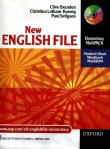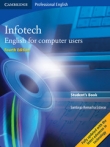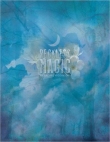
Текст книги "Английский язык. Higher education "
Автор книги: Екатерина Филончик
Жанры:
Иностранные языки
,сообщить о нарушении
Текущая страница: 1 (всего у книги 5 страниц)
Е.И. Филончик
Н.В. Матусевич
Английский язык
" Higher education "
Учебно-методическое пособие
для студентов всех специальностей
Минск 2008
Английский язык. Higher education. Учебно-методическое пособие.
Составители Филончик Е.И., Матусевич Н.В.
Рецензент:
В.Ф. Толстоухова, кандидат педагогических наук, доцент.
СОДЕРЖАНИЕ
Цели и задачи курса
3
Раздел 1. Содержание учебного материала
4
Раздел 2. Higher education
6
Unit 1. Higher education in the Republic of Belarus
6
Unit 2. Higher education in Great Britain
20
Unit 3. Higher education in the USA
31
Unit 4. Our Institute
45
Unit 5. My Future Career
56
Раздел 3. Перечень вопросов, ситуаций, тем к зачету по английскому языку по блоку "Высшее образование"
73
Рекомендовано к утверждению кафедрой иностранных языков ИПП
«__»_____________2008 г. (протокол № __ ).
Утверждено Научно-методическим советом ИПП
«__»_____________2008 г. (протокол № __ ).
© Институт парламентаризма
и предпринимательства
ЦЕЛИ И ЗАДАЧИ КУРСА
Настоящее учебно-методическое пособие предназначено для студентов социально-экономического факультета ИПП как дневной, так и заочной формы обучения, изучающих социокультурный и/или лингвострановедческий курс английского языка. Рассчитано на 72 часа аудиторной работы для студентов гуманитарных и экономических специальностей на дневной форме обучения, 30 часов и 10 часов соответственно для студентов гуманитарных и экономических специальностей на заочной форме обучения, что отображено в разделе 1 пособия.
Характер данного пособия определяется целью, которая ставится при обучении иностранным языкам в неязыковых вузах – углубление иноязычных знаний и формирование коммуникативных навыков и умений студента. Данное пособие призвано обеспечить студентов тематически упорядоченным языковым материалом, который может служить основой для развития и закрепления навыков, необходимых для глубокого понимания содержания иноязычного текста, анализа прочитанного, подготовки к монологической и диалогической речи, а также для письменных сообщений.
Предлагаемое учебно-методическое пособие включает 3 раздела: Раздел 1. Содержание учебного материала; Раздел 2. Учебный материал «Высшее образование»; Раздел 3. Материал для итоговой проверки учебного материала.
При составлении пособия учитывался принцип поэтапной проработки материала. Раздел 2 состоит из 5тематических блоков (Units), объединенных общей темой «Высшее образование»: 1. Система высшего образования в Республике Беларусь; 2.Система высшего образования в Великобритании; 3. Система высшего образования в США; 4. Наш институт; 5. Будущая профессия. Каждый из этих блоков является вполне законченным и самостоятельным и может быть использован независимо от других блоков и в той степени, в которой этого требует уровень знаний студентов.
Каждый блок открывается тематическим словарем (Topical Vocabulary) и содержит модули (Activity) по 4 видам речевой деятельности (чтение – Reading, говорение и письмо – Speak and Write, аудирование – Listening) и по языковому материалу, в частности, по работе с лексикой – Vocabulary Study, а также имеет инструкции для выполнения соответствующих языковых и речевых действий (Directions). Модули по аудированию содержат скрипты аудиоматериалов.
Тематический блок также включает модули для самостоятельной работы студентов (Self-Work) с последующим контролем в аудитории и дополнительный материал по чтению разной степени трудности (Supplementary Reading), что позволяет преподавателю работать со студентами дифференцированно.
Модули каждого блока связаны тематически, что позволяет проводить обобщающую проверку пройденного материала по вопросам, указанным в разделе 3 пособия. Таким образом, данное учебно-методическое пособие блочно-модульного варианта способно оказать существенную помощь как преподавателю иностранного языка в процессе обучения, так и студенту при изучении данной учебной дисциплины.
Раздел 1. СОДЕРЖАНИЕ УЧЕБНОГО МАТЕРИАЛА
1.1. Дневная форма обучения
Нумерация, название разделов, тем дисциплины и их краткое содержание
Количество часов
Всего
Практич. занятия
Раздел 1. Высшее образование
72
Тема 1.1. Система высшего образования в Республике Беларусь.
1. Структура высшего образования в Республике Беларусь. 2. История Белорусского государственного университета. 3. Государственная политика в области образования.
12
Тема 1.2. Система высшего образования в Великобритании.
1. Структура высшего образования в Великобритании. 2. Сфера образования в Великобритании. 3. Сравнительный анализ систем высшего образования Республики Беларусь и Великобритании.
16
Тема 1.3. Система высшего образования в США.
1. Структура высшего образования в США. 2. Американский колледж. 3. Сравнительный анализ систем высшего образования Республики Беларусь, Великобритании и США.
12
Тема 1.4. Наш институт.
1. Учеба в институте. 2. Студенческая жизнь. 3. Белорусский государственный экономический университет.
16
Тема 1.5. Будущая профессия.
1. Проблема выбора профессии. 2. Профессия экономиста. 3. Мир профессий.
16
1.2. Заочная форма обучения для гуманитарных специальностей
Нумерация, название разделов, тем дисциплины и их краткое содержание
Количество часов
Всего
Практич. занятия
Раздел 1. Высшее образование
30
Тема 1.1. Система высшего образования в Республике Беларусь.
1. Структура высшего образования в Республике Беларусь. 2. История Белорусского государственного университета. 3. Государственная политика в области образования.
6
Тема 1.2. Система высшего образования в Великобритании.
1. Структура высшего образования в Великобритании.
2. Сфера образования в Великобритании. 3. Сравнительный анализ систем высшего образования Республики Беларусь и Великобритании.
6
Тема 1.3. Система высшего образования в США.
1. Структура высшего образования в США. 2. Американский колледж. 3. Сравнительный анализ систем высшего образования Республики Беларусь, Великобритании и США.
6
Тема 1.4. Наш институт.
1. Учеба в институте. 2. Студенческая жизнь. 3. Белорусский государственный экономический университет.
6
Тема 1.5. Будущая профессия.
Проблема выбора профессии. 2. Профессия экономиста. 3. Мир профессий.
6
1.3. Заочная форма обучения для экономических специальностей
Нумерация, название разделов, тем дисциплины и их краткое содержание
Количество часов
Всего
Практич. занятия
Раздел 1. Высшее образование
10
Тема 1.1. Система высшего образования в Республике Беларусь.
1. Структура высшего образования в Республике Беларусь. 2. История Белорусского государственного университета. 3. Государственная политика в области образования.
2
Тема 1.2. Система высшего образования в Великобритании.
1. Структура высшего образования в Великобритании. 2. Сфера образования в Великобритании. 3. Сравнительный анализ систем высшего образования Республики Беларусь и Великобритании.
2
Тема 1.3. Система высшего образования в США.
1. Структура высшего образования в США. 2. Американский колледж. 3. Сравнительный анализ систем высшего образования Республики Беларусь, Великобритании и США.
2
Тема 1.4. Наш институт.
1. Учеба в институте. 2. Студенческая жизнь. 3. Белорусский государственный экономический университет.
2
Тема 1.5. Будущая профессия.
Проблема выбора профессии. 2. Профессия экономиста. 3. Мир профессий.
2
Раздел 2
Higher education
UNIT 1
TOPIC “ Higher education in the Republic of Belarus”
TOPICAL VOCABULARY
to be in demand
быть востребованным
higher educational establishment
ВУЗ
ratio
соотношение
profile university
профильный университет
state owned
государственный
to occupy a particular niche
занимать определенную нишу
training of highly qualified staff
подготовка специалистов высшей квалификации
to provide
обеспечивать
academic degrees of Bachelor and Master
академические степени «бакалавр» и «магистр»
5-year curriculum
программа 5-летней продолжительности
a graduate
выпускник
high entrance competition
высокий конкурс при поступлении
to study at budget cost
обучаться за счет бюджетных средств
an entrant
абитуриент
for smbd’s own account
за собственные средства
full-time form
дневная форма обучения
evening form of studying
вечерняя форма обучения
studying by correspondence
заочная форма обучения
to receive a monthly allowance
получать учебные стипендии
academic success
успеваемость
highly-qualified teaching staff
высококвалифицированные педагоги
an associate professor
доцент
to participate
принимать участие
to render to assistance
оказывать помощь
Tutorial Board
попечительский совет
postgraduate education
послевузовское образование
to be subordinate to
управляться кем-л.
GETTING STARTED
What do you know about the system of higher education in our country?
What famous Belarusian Universities do you know?
ACTIVITY A
SCAN THE TEXT 1
HIGHER EDUCATION IN THE REPUBLIC OF BELARUS.
DIRECTIONS:
Before you begin to read, look at these topics. There is each topic for each paragraph. Look quickly
at the reading to find these topics. Do not read every word at this point. Write the number of the
paragraph next to the topic of that paragraph.
Major types of higher educational establishments in the Republic of Belarus.
Higher education in Belarus does not only mean lectures, seminars and exams.
Finding a good job on specialty after graduation is not a problem in our country.
The reputation of Belarusian education.
Major forms of learning in Belarusian higher educational establishments.
ACTIVITY B
READING
DIRECTIONS:
Now read.
Higher education in the Republic of Belarus
1. Belarusian education is ranked among the best ones, and the Belarusian specialists are much in demand in the world. Therefore both our citizens and foreign students wish to study in the higher educational establishments (Universities) of the Republic. There are 340 students per 10,000 residents of Belarus. This ratio is among the highest in Europe.
2. There is a broad network of educational establishments in the system of higher education of Belarus. Four major types can be distinguished:
Classical university;
Profile university or academy;
Institute;
Higher college.
3. There are 57 higher educational establishments, of which 43 are state owned, 13 are private and 2 are run by religious organizations. Every establishment occupies its particular niche in training of highly qualified staff for various branches of national economy.
4. Classical and profile universities as well as institutes are classified as higher educational establishments of university type and provide a two level system of higher education with academic degrees of Bachelor and Master. At the same time the old 5-year curriculum is still in use. Graduates both from state and private universities are granted state diplomas of higher education.
5. But it is not that easy to become a student. High demand on higher education led to high entrance competition regardless of form of study or specialty. Therefore only the very best can study at budget cost. The entrants who passed the entrance exams successfully but did not win the competition have the opportunity to study for their own account.
6. Belarusian higher educational establishments have 3 forms of learning: full-time, evening and by correspondence. Full-time learning is the most widespread and in the greatest demand with 2/3 of the students. Less than 1% of students use evening form of learning and over 35% of students learn by correspondence. Full-time students with positive grades receive a monthly allowance. Its size depends on a student’s academic success. Correspondence and evening forms of learning are a good opportunity for persons with financial, age, physical and other limitations.
7. The efficiency of any form of learning is ensured by highly-qualified teaching staff which includes a large number of candidates and doctors of science, associate professors and professors.
8. But higher education in Belarus does not only mean lectures, seminars and exams. In addition Belarusian students participate in international scientific conferences and competitions, student exchange programs. Belarusian teams take first places at competitions in mathematics, economy and programming. University administration renders assistance in conducting leisure activities of students. Let’s take for example Belarusian State University (BSU), the largest higher educational establishment in the Republic. The BSU Students’ Tutorial Board is the initiator of students’ festivals, sports and athletics meetings, tourist programs and the Bard’s club sessions, which became regular events in the life of the BSU students. Such bodies function at many educational establishments.
9. This is how students spent their time at Belarusian higher educational establishments. After graduation the budget students are provided with the first workplaces. Finding a good job on specialty both in the republic and abroad is not a problem for paying students either.
After university graduation young specialists have the possibility to get a postgraduate education. Regardless of pattern of ownership all higher educational establishments are subordinate to the Ministry of Education of the Republic of Belarus.
ACTIVITY C
VOCABULARY STUDY
PART 1
DIRECTIONS:
Match the synonymous pairs:
board
provide
academic success
an entrant
to participate
render to assistance
competition
teaching staff
council
supply
progress in studies
a school-leaver
to take part
to help
contest
educational specialists
PART II
DIRECTIONS:
Which word doesn’t suit the group?
stuff, team, classroom, collective
training, education, assistance, up-bringing
university, school, academy, institute
a lecture, an activity, a seminar, an exam
ACTIVITY D
READING COMPREHENSION
PART 1
DIRECTIONS:
Mark the statements below as ‘ True ‘ (T) or ‘ False ‘ (F)
The Belarusian specialists are much in demand in the world.
Classical and profile universities provide a three level system of higher education.
Evening form of learning is the most widespread in our country.
Belarusian teams take first places at various international competitions.
After graduation all students are provided with the first workplaces.
T
F
PART II
DIRECTIONS:
Ask 5 questions of different types to different sentences.
ACTIVITY E
ORGANIZING YOUR THOUGHTS
PART I
DIRECTIONS:
Working with a partner make some decisions about the following situation:
You are invited to the international conference concerning the development of higher education in different countries. You need to decide what to say about the system of higher education in the Republic of Belarus.
PART II
DIRECTIONS:
Working in groups discuss possible answers:
Is it easy to become a student in our Republic?
Are the Belarusian specialists really much in demand in the world? Do you think it is a positive or a negative tendency? Prepare arguments for and against.
ACTIVITY F
WRITE AND SPEAK
PART I
DIRECTIONS:
Give a summary of the text.
PART II
DIRECTIONS:
Express your opinion:
The quality of higher education in our Republic.
Only the very best students can study at budget cost.
ACTIVITY G
LISTENING COMPREHENSION:
PART I
DIRECTIONS:
Listen to the passage that will be read to you and choose the correct answers from those given below. Choose one letter only, А , В , C, or D, for each of your answers. The passage will be read to you twice with pauses on the second reading for you to select your answers.
Education has acquired a kind of snob value in modern times. We are no longer content to be honest craftsmen, skilled at our work through years of patient practice. Nowadays if we want to get a decent job, we have to have a piece of paper. If we want promotion in even the humblest job, we have to obtain a certificate or a diploma first. We may know that we would be better at the job than the man with the paper qualifications, but our experience and practical skills are regarded as relatively unimportant. 'Johnson would have been Manager by now if he'd taken the trouble to get a degree,' his colleagues say, 'he's a clever man. He could have done anything if he'd had a proper education.'
I wonder if, as time goes on, we shall discover that many people whose practical experience and ability would have been enormously useful to their employers, have been rejected on the grounds that they are insufficiently qualified. Would it not be better to allow people to become expert in the way most suited to them, rather than oblige them to follow a set course of instruction which may offer no opportunity for them to develop skills in which they would have become expert if left to themselves?
1 The writer says that education
A is only valued by snobs
В is only acquired by snobs
С has become a modern form of snobbery
D has become a sign of snobbery
2 If we want to get promotion nowadays we have to
A produce proof of our qualifications
В write a paper about our qualifications
С apply to take a certificate
D apply to take a diploma
3 From the passage we understand that his colleagues think that Johnson
A should have been given a degree
В would have been able to get a degree
С couldn't have done anything without a degree
D wouldn't have become manager without a degree
4 The writer fears that without paper qualifications many people
A won't be able to get a job
В will prove useless in their job
С will be dismissed from their job
D won't be considered for a job
5 In the writer's opinion it would be better if people
A were obliged to educate themselves in their own way
В were free to become educated in their own way
С attended more practical courses
D attended courses intended for experts
ACTIVITY H
SELF-WORK:
TEXT 2
PART I
DIRECTIONS:
Translate the topical vocabulary using a dictionary:
a scholar –
capacity –
illiteracy –
campus –
significant –
to contribute –
foundation –
elimination –
ordeal –
landmark –
to sacrifice –
evidence –
creative –
facility –
to plunder –
to participate –
prominent –
staff –
PART II
DIRECTIONS: Now read .
HISTORY OF THE BELARUSIAN STATE UNIVERSITY
October 30, 1921 is the foundation date of the main educational establishment in our country – the Belarusian State University.
Academician Vladimir Ivanovich Picheta – the outstanding historian and slavist – headed the University. The first Rector united the staff consisting of scholars from Moscow, Kazan, and Kiev universities.
Rapid development of the University played a significant role in the creation of the educational system of the republic. The University’s educational and research capacity gave birth to a number of independent higher educational establishments, such as Minsk Medicine Institute, Minsk Law Institute, Minsk Pedagogical Institute, the Belarusian Institute of National Economy, Minsk Chemical and Technological Institute, which later became a part of the Polytechnic Institute. The Belarusian State University contributed much to the foundation and development of the Academy of Sciences, the Republic’s State Library and a number of large research institutions.
Elimination of illiteracy, assimilation of European and world cultural heritage, formation of the national system of higher education and science – all these impressive achievements of the Belarusian people in 1920-1930s would have been impossible without the University and the work of its staff.
In a two decades’ time the Belarusian State University trained 5240 specialists in History, Law, Mathematics, Chemistry, Biology, etc. The activities of the People’s Writer of Belarus Yakub Kolas and outstanding Commander-in-Chief, Marshal of the Soviet Union G.K.Zhukov were associated with the name of the University of that period. It was the time when L.A.Artsymovich, P.U.Brovka, K.K.Krapiva studied and worked at the University. These outstanding people made a valuable contribution to the development of both national and world science and culture.
1941 was the year of the most severe ordeal in the history of the University. June 21, 1941 a jubilee exhibition was arranged at the University presenting the achievements of the staff consisting at the time of 17 professors, 41 associate professors, 90 teachers and assistants, 60 post-graduates and 1337 students. The day following the celebration, June 22, 1941 became a tragic landmark in our history. All the post-war generations of teachers, post-graduates and students of the University have always remembered and will remember their colleagues who left the classrooms and scientific laboratories to sacrifice their lives for the glory and independence of their Motherland. The evidence of this is the obelisk erected in 1970s at the University campus in honor of those who perished in the battle against fascism.
The war did great damage to the University. The University campus was destroyed almost completely. University archives, library funds, laboratories and study-rooms were plundered. The pre-war education and material base of the University had been restored by the end of 1950. A new period in the history of the Belarusian State University began, the period of its rapid development, creative teaching and scientific research.
The 1950-1980s were characterized by an expansion in the scope of University activities. Its material base and teaching facilities were improved by the Government’s decisions. The contents, forms and methods of academic process and scientific research changed radically. New buildings of faculties were erected and new faculties were opened: the Faculty of Law, Faculty of Mathematics and Mechanics, Faculty of Physics, Faculty of Applied Mathematics and Computer Science, Faculty of Radio Physics and Electronics, Philosophy and Economics.
The Belarusian State University deservedly occupied an honorable place among the leading universities of the Soviet Union. Its international prestige increased, scientists and professors actively participated in international symposia and conferences, sessions of the UN General Assembly and UNESCO.
In 1990s the Belarusian State University was the largest scientific and educational center not only with impressive achievements and traditions, but also with a number of problems caused by serious contradiction in the development of society. June 27, 1991 the Supreme Soviet adopted the Declaration of Independence of the Republic of Belarus and the Belarusian people faced the vital task of the development of a sovereign state. Being the oldest and largest University of our country, the Belarusian State University contributed to the programs of strengthening the Belarusian statehood, the development of economic and social reforms in our republic. In 1995 the Faculty of International Relations; in 1999 two new faculties – the Faculty of Philosophy and Social Science and the Faculty of Economics were formed on the basis of former Philosophy and Economics Faculty. The Military and Humanities faculties, as well as several educational bodies of unitary status added to the university structure.
Today the Belarusian State University is a prominent educational, scientific, and production complex that includes 17 faculties, the State Institute of Management and Social Technologies, Institute of Business and Administration Technologies, Institute of Theology named after Sts. Cyril and Methodius, the BSU lyceum and law college. Three scientific research institutes, five national scientific centers, and 14 unitary scientific and production enterprises are also in the university structure.
PART III
DIRECTIONS:
Find in the text the English equivalents for:
Культурное наследие, быстрое развитие университета, исследовательский институт, формирование национальной системы высшего образования, внести неоценимый вклад, занимать почетное место, принимать активное участие в международных симпозиумах и конференциях, крупнейший научный и образовательный центр, факультет прикладной математики и информатики, серьезное противоречие, факультет международных отношений.
PART IV
DIRECTIONS:
Match the synonymous pairs:
a scholar
main
prominent
evidence
considerable
illiteracy
creation
to ruin
facility
a scientist
principle
outstanding
proof
significant
ignorance
formation
to destroy
means
PART V
DIRECTIONS:
Agree or disagree with the following statements:
The Belarusian State University is the main educational establishment in our country.
The University wasn’t destroyed during the war.
In 1950-1980s the international prestige of the Belarusian State University considerably increased.
Today the Belarusian State University includes 10 faculties.
PART VI
DIRECTIONS:
Complete the following sentences:
October 30, 1921 is the foundation date of … .
The University’s educational and research capacity gave birth to … .
The Belarusian State University contributed much to the foundation and development of … .
The 1950-1980s were characterized by … .
The University’s scientists and professors actively participated in …
TEXT 3 EDUCATION IN BELARUS
TOPICAL VOCABULARY
resource n.
ресурс
universal literacy
всеобщая грамотность
census n.
перепись населения
be engaged
быть занятым
secondary education
среднее образование
graduate
окончить учебное заведение
embrace v.
включать, заключать в себе, содержать
attend v.
посещать
guarantee v.
гарантировать
citizen n.
гражданин
preserve v.
сохранять
common human
общечеловеческие
values
ценности
perception n.
восприятие
reform v.
реформировать, исправлять
qualitatively adv.
качественно
correspond v.
соответствовать
ensure v.
гарантировать
ability n.
способность
inclination n.
наклонность
envisage v.
предусматривать, исправлять
continuity n.
преемственность, непрерывность
vocational training
профессиональное обучение
priority п
приоритет
sense of ecological purpose
Экологическая направленность
gifted children
одаренные дети
trend п.
тенденция, уклон
seek
добиваться, стремиться
bachelor's degree
степень бакалавра
obtain master's degree
получать степень магистра
non-state-owned schools
негосударственные школы
PART 1
DIRECTIONS:
Read the text:
Education in Belarus
Scientific and intellectual potential is the main strategic resource of Belarus. In 1950s Belarus became the country of universal literacy. In 1989, according to the results of the census, 899 people per each thousand engaged in the national economy had higher and secondary education; 144 people among them were the graduates from the higher educational establishments. Thus, we can say that Belarus had a developed system of education. It embraced 11,000 educational establishments; 430,000 teachers worked there; 33 per cent of population attended different forms of classes.
Nowadays the number of students attending different educational establishments has not changed. The republic guarantees its citizens the right to universal secondary education and creates means for further professional education. It tries to preserve the democratic character of education, paying much attention to common human values, developing independent critical thinking instead of simple perception of information.
The republic is reforming its system of education today with the aim of creating an independent, qualitatively new national school, corresponding to international standards and ensuring each citizen the right to the high-quality education according to his abilities and inclinations.
The reform envisages a continuity of study at all stages, such as pre-school, secondary school, vocational training and specialized secondary school, and at the higher school level. It gives teachers and students freedom in the choice of educational forms and methods, while the results must correspond to the state educational standards.
The main principles of the educational system in Belarus are the priority of human values, national culture as the basis of education, humanism, sense of ecological purpose, scientific basis, democracy, support of gifted children and so on.
In the period from 1996 till 2010 the reform envisages:
1. 12 year secondary school. Academic education in the 11—12th forms according to the main trends of the higher education: humane, natural, aesthetic and technological.
2. Primary vocational training at vocational schools.
3. Secondary vocational training at secondary specialized schools and colleges.
4. Higher education at two levels: the first level for those seeking a bachelor's degree (4—5 years) and the second level to obtain a master's degree (5—6 years).
5. Possibility for masters to obtain doctoral degree.
There have been changes in the organization of education itself. New types of educational
establishments have appeared: gymnasiya, lyceum, experimental school, college. There appeared non-state-owned schools of various kinds, private kindergartens, schools at home, commercial institutes. So, it stimulates effectiveness of education, creates non-idealistic attitude to society on students' part.
PART II
DIRECTIONS:
Find the English equivalents of the following sentences in the text:
Следует отметить, что в пятидесятых годах Беларусь стала страной всеобщей грамотности.
Республика гарантирует своим гражданам право на среднее общее образование и дает возможности для дальнейшего профессионального образования.
Государство предоставляет учителям и учащимся свободу в выборе форм и методов обучения, но результаты должны соответствовать государственным стандартам.
Появились новые типы образовательных учреждений: гимназия, лицей, экспериментальная школа, колледж.
PART III
DIRECTIONS:
Fill in the blank with the correct word:
1. In 1989, according to the results of the ..., 899 people per each thousand ... in the national economy had ... and ... education; 144 people among them were ... from the..........
2. The republic tries to ... the democratic character of education, paying much attention to.........
190 developing independent critical thinking instead of simple ... of information.
3. The republic is ... its system of education today with the aim of creating an independent,... new national school,... to international standards and ... each citizen the right to the high-quality education according to his ... and ....
4. So, it stimulates ... of education, creates......to society on students' part.
PART IV
DIRECTIONS:








